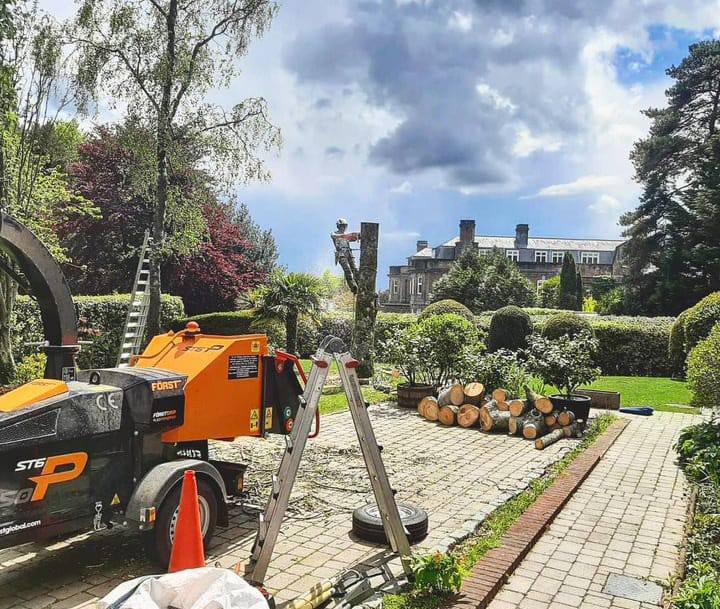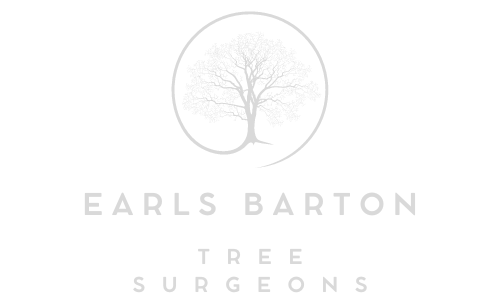Creative Hedge Cutting for Small Spaces: Maximising Greenery in Tiny Yards
In today’s world of compact living, small gardens and limited outdoor spaces have become more common, especially in urban areas. However, having a tiny yard doesn’t mean you have to compromise on greenery or visual appeal. With the right hedge cutting techniques, you can make the most of your outdoor space by creating attractive, well-structured hedges that enhance both privacy and beauty. At Earls Barton Tree Surgeons, we specialise in creative hedge cutting solutions tailored to maximise greenery in even the smallest of spaces in Earls Barton, Northamptonshire. This blog post explores how hedge cutting can transform tiny yards into lush, green retreats.
Why Hedges Work Well in Small Spaces
Hedges offer a versatile and space-efficient way to incorporate greenery into compact gardens. Unlike bulky fences or walls, hedges create a natural, living boundary that can be shaped and trimmed to suit the size and layout of your yard. They provide privacy, define garden spaces, and can even serve as a backdrop for plants or seating areas.
Additionally, hedges add texture and depth to your garden without taking up too much ground space. By selecting the right plants and applying thoughtful pruning techniques, you can achieve a tidy, attractive hedge that enhances the aesthetic of your outdoor area.
Choosing the Right Hedge Plants for Small Gardens
Before diving into creative hedge cutting techniques, it’s important to choose the right plants for your small garden. When space is limited, you’ll want to opt for slow-growing, compact plants that can be easily shaped and maintained. Here are some ideal hedge plants for tiny yards:
- Boxwood (Buxus): Known for its dense foliage and slow growth, boxwood is perfect for small spaces. It can be easily shaped into various forms, from simple lines to more intricate designs.
- Privet (Ligustrum): A versatile choice, privet hedges can be trimmed into compact shapes, making them ideal for small gardens.
- Yew (Taxus): Yew is a slow-growing evergreen hedge that is excellent for shaping and topiary work. Its rich green foliage adds elegance to small yards.
- Japanese Holly (Ilex crenata): This compact, low-maintenance plant offers a dense, rounded shape, ideal for smaller spaces.
Creative Hedge Cutting Techniques for Small Yards
Maximising the potential of a small garden often requires a creative approach. Here are some hedge cutting techniques that will help you make the most of limited space:
1. Geometric Shapes for Structure
Hedges can be trimmed into sharp, geometric shapes such as cubes, pyramids, or spheres. These shapes not only create a modern, structured look but also make the garden appear more organised and spacious. Straight-edged hedges can line pathways or define seating areas, while spherical or pyramid-shaped hedges serve as focal points.
2. Tiered and Layered Hedges
For a more dynamic look, consider creating tiered or layered hedges. By trimming hedges at different heights, you can add depth and dimension to your small garden. This technique works especially well with low-growing hedges in front of taller ones, creating a cascading effect that adds interest without overwhelming the space.
3. Espalier Hedging
Espalier is a technique in which plants are trained to grow flat against a wall or fence, saving valuable ground space. This method is particularly useful in small gardens where vertical greenery is needed. While often used with fruit trees, this technique can also be applied to certain hedge plants like yew or privet. Espaliered hedges can frame a patio or wall, creating a green backdrop that maximises vertical space.
4. Hedge Archways and Entrances
Incorporating archways or arched entrances into your hedge design adds a sense of grandeur and creates the illusion of a larger garden. These features can serve as entry points to different areas of the garden or as standalone decorative elements. Small archways made from boxwood or privet provide a charming way to break up the space and add height.
5. Topiary Sculptures
For those looking to make a bold statement, topiary sculptures are an excellent choice. While traditionally associated with large estates, topiary can be just as effective in small gardens. By carefully trimming hedge plants into artistic shapes, such as animals, spirals, or abstract forms, you can create a unique, eye-catching feature that makes the most of limited space.
Maintenance Tips for Hedges in Small Gardens
Hedges in small spaces need regular maintenance to keep them looking their best and to ensure they don’t overgrow the garden. Here are some essential tips for maintaining hedges in small yards:
- Regular Pruning: Since space is limited, it’s important to prune hedges regularly to maintain their shape and prevent them from becoming overgrown. Depending on the plant species, this could mean trimming once or twice a year.
- Use the Right Tools: For precise hedge cutting in small gardens, invest in high-quality hand shears or electric trimmers. These tools will help you achieve neat, clean cuts that promote healthy growth.
- Water and Fertilise: Even small hedges need proper care. Make sure your hedge plants receive enough water, especially during dry periods, and consider fertilising them to encourage healthy, dense growth.
- Check for Pests: Hedges in compact areas may be more susceptible to pests or diseases due to limited air circulation. Regularly inspect your plants for signs of infestation or damage and treat them promptly if necessary.
Conclusion
Even in the smallest of spaces, hedges can create a beautiful, functional, and green environment. With creative hedge cutting techniques, you can make the most of your tiny yard, adding privacy, structure, and visual appeal. At Earls Barton Tree Surgeons, we specialise in professional hedge cutting services tailored to your garden’s specific needs in Earls Barton, Northamptonshire.
Call us on: 01604 279 697
Click here to find out more about Earls Barton Tree Surgeons
Click here to complete our contact form and see how we can help with your tree needs.

